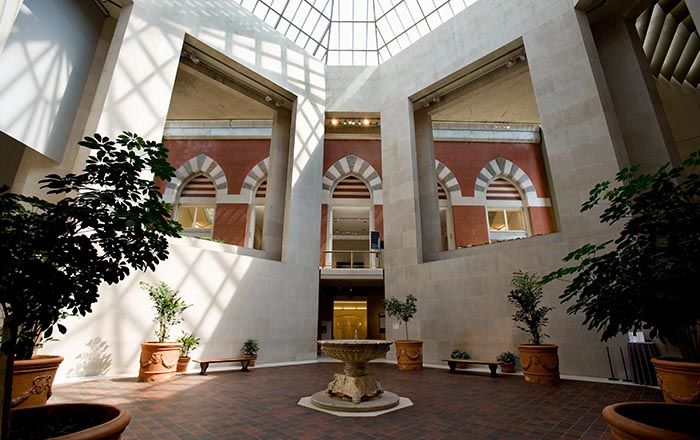Chasuble
Not on view
This fine chasuble (a liturgical vestment worn during the celebration of the Mass) forms a set with three other liturgical textiles in the Robert Lehman Collection: a maniple (1975.1.1798), a stole (1975.1.1799), and a burse (1975.1.1800). The four objects are embroidered in an allover polychrome floral design entirely surrounded by a solidly worked background in silvered metal thread with additional patterns in gilt metal thread. On the chasuble front and back large blossoms are arranged symmetrically on either side of a spray of pink carnations and other flowers placed along the center axis and the background is composed of freely meandering strapwork of wide floral stems and leaves worked in gilt metal thread. The same floral motifs, smaller in scale, appear on the accessories. A large-scale floral design embroidered in a smilar style against a solid background in gilt metal thread decorates a chasuble and two matching dalmatics in the Domschatz, Frankfurt am Main, that has been dated to the eighteenth century, or probably somewhat later than the Lehman vestments. Although this design is almost entirely secular, it was undoutedly made specifically for the Lehman chasuble and its accessories. One faint reference to the objects' religious function is buried in the design just above the carnation at the center of the chasuble back in a small cartouche, possible a coat of arms, containing a pelican piercing its breast to feed its young, a symbol of Christ's sacrifice on the cross. On the maniple and stole there are gilt crosses at the center of both ends of a garland of blossoms, and in the center of the burse is a gilt cross surrounded by tulips and surmounted by a stylized lily.
Due to rights restrictions, this image cannot be enlarged, viewed at full screen, or downloaded.

